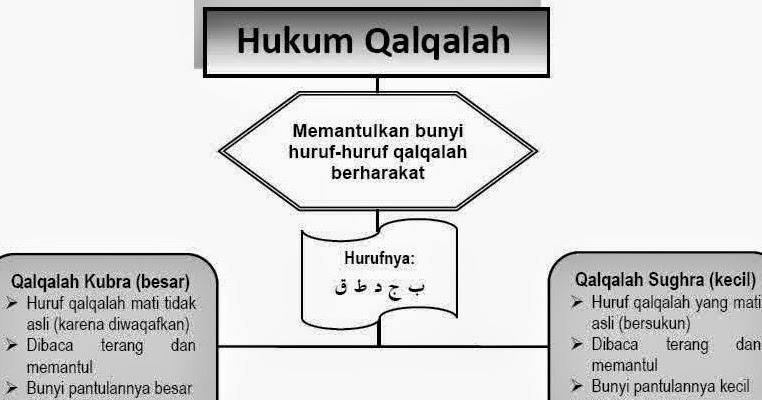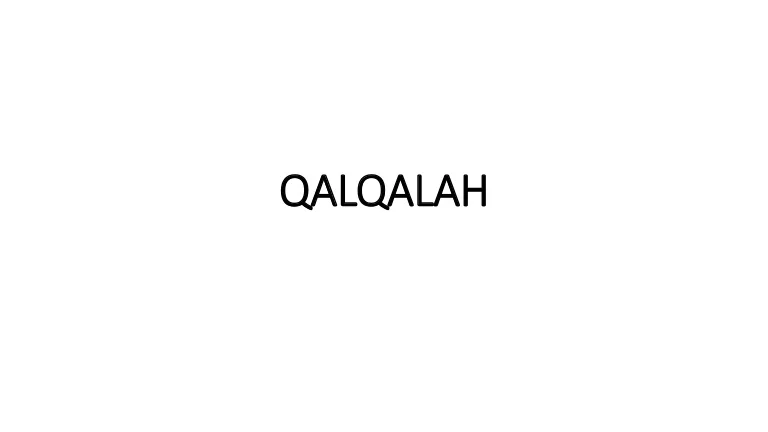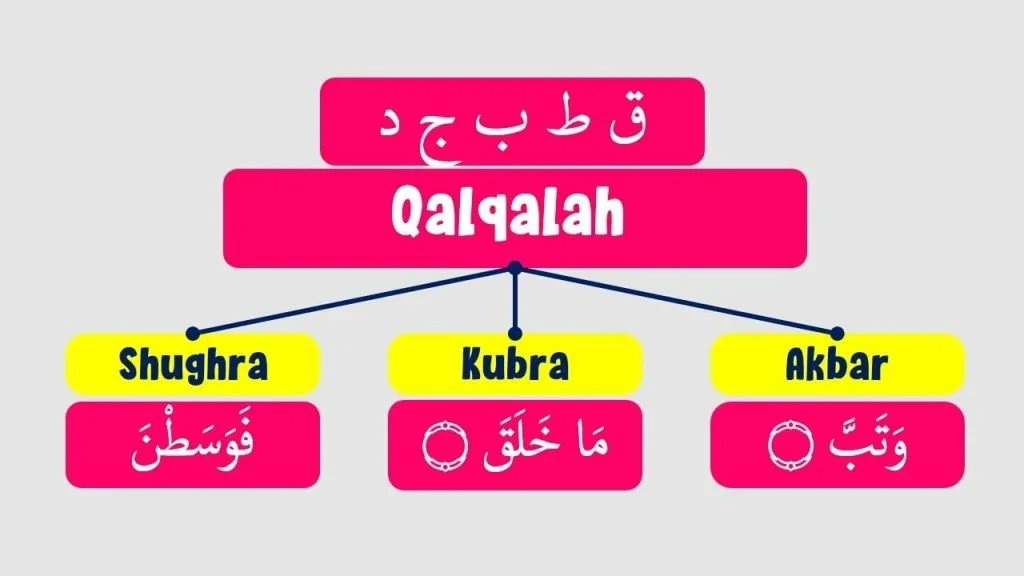Strong and weak Qalqalah, tajweed, the art of correct pronunciation and recitation of the Quran, has numerous rules that help beautify and perfect one’s recitation. One of these essential rules is Qalqalah, a characteristic that involves a subtle “echoing” or “bouncing” sound made on specific letters when reciting.
Understanding the difference between Strong (Qalqalah Kubra) and Weak (Qalqalah Sughra) Qalqalah can significantly enhance the clarity and beauty of Quranic recitation. This guide will cover the fundamentals of Strong vs.Weak Qalqalah in Tajweed, including common examples, and pronunciation tips to help learners and reciters improve their mastery of these rules.
What is Qalqalah?
Strong and weak Qalqalah, Qalqalah refers to an echoing or bouncing effect produced on five specific letters in the Arabic language, known as the Qalqalah letters: ق، ط، ب، ج، د (qaf, ta, ba, jim, dal). This sound occurs when these letters are pronounced in specific scenarios, especially in a state of sukoon (absence of a vowel).

In the science of Tajweed, Qalqalah avoids sharply closing the sound on the Qalqalah letters. Instead, a bouncing sound occurs, creating a soft echo that makes the recitation flow more smoothly.
Types of Qalqalah

There are two types of Qalqalah in Tajweed Strong and weak Qalqalah:
- Qalqalah Sughra (Weak or Minor Qalqalah)
- Qalqalah Kubra (Strong or Major Qalqalah)
Each type has distinct conditions that influence the way it is applied in Quranic recitation.
Strong vs.Weak Qalqalah in Tajweed
Qalqalah Sughra (Weak or Minor Qalqalah)
Definition:
Strong and weak Qalqalah , Qalqalah Sughra, or Weak Qalqalah, occurs when a Qalqalah letter has a sukoon (is non-vowelized) within a word or sentence without being at the end of the recitation.
Pronunciation Tips:
In Qalqalah Sughra, the bouncing or echoing sound is light and subtle. This occurs because the letter is not the final letter in the recitation, so the emphasis is minimized. The sound does not end abruptly; it has a gentle bounce.
Example of Qalqalah Sughra:
-
In the word أَبْصَارِهِمْ (“absaarihim”), the letter ب (ba) is in a state of sukoon, causing a slight bouncing sound.
-
قَدْ أَفْلَحَ (“qad aflaḥa”), the letter د (dal) has sukoon, and a subtle bounce is heard.
Qalqalah Kubra (Strong Qalqalah)
Definition:
Strong vs.Weak Qalqalah in Tajweed, Qalqalah Kubra, or Strong Qalqalah, occurs when a Qalqalah letter has sukoon and is the final letter at the end of an ayah or when stopping (waqf). The echoing sound here is more prominent and intense than in Qalqalah Sughra.
Pronunciation Tips:
In Qalqalah Kubra, the bounce is pronounced strongly to create a clear and distinct echo. This sound marks the end of an ayah with a memorable note, reinforcing the finality of the recitation.
Example of Qalqalah Kubra:
-
In the phrase قَدْ أَفْلَحَ at the end of an ayah, the د (dal) has sukoon, and since it is the final letter, the echo is pronounced more emphatically.
-
الْحَقُّ (“al-haqq”), ending with the letter ق (qaf), produces a strong Qalqalah sound when reciting it at the end of the ayah.
Why Is Qalqalah Important?
Strong vs.Weak Qalqalah in Tajweed, Qalqalah brings clarity, rhythm, and emphasis to the recitation of the Quran. It ensures that sounds are distinct, especially in positions where a word might otherwise be challenging to pronounce clearly. Mastery of Qalqalah is crucial in Quranic recitation as it preserves the accuracy of pronunciation and enhances the listener’s experience.
How to Pronounce Qalqalah Correctly?

Strong vs.Weak Qalqalah in Tajweed, To produce qalqalah:
- Articulate the qalqalah letter with the echoing sound by using a slight bounce.
- For Weak Qalqalah, minimize the echo to keep it subtle.
- For Strong Qalqalah, add more emphasis to the echo, especially at the end of a word.
Common Mistakes in Qalqalah
- Overemphasizing Weak Qalqalah: Some readers might apply the strong qalqalah sound in situations that require a weaker bounce, resulting in an exaggerated recitation.
- Underemphasizing Strong Qalqalah: Failing to produce a clear qalqalah sound at the end of a word can diminish the clarity and intended sound effect.
How to identify Qalqalah letters?
Strong vs.Weak Qalqalah in Tajweed, Identifying qalqalah letters in Tajweed is straightforward once you know the specific letters and their pronunciation rules. Here’s how to recognize and work with them:
-
Memorize the Qalqalah Letters
Five specific letters exhibit the qalqalah sound:
ق (Qaf)
ط (Ta)
ب (Ba)
ج (Jim)
د (Dal)
An easy way to remember them is through the Arabic phrase قطب جد (Qutub Jad), as it includes all qalqalah letters.
-
Recognize Qalqalah Conditions
To identify when to apply qalqalah, check for these conditions:
- Qalqalah Sughra (Weak Qalqalah): When a qalqalah letter is in the middle or beginning of a word without a sukoon.
- Qalqalah Kubra (Strong Qalqalah): When a qalqalah letter is at the end of a word and has a sukoon (i.e., at a stop point or waqf).
-
Understand Letter Position and Sound
- Each qalqalah letter has a unique echo sound that becomes apparent in recitation. When these letters appear with a sukoon or are positioned at a stop, they require the qalqalah sound, creating a subtle bounce or echo.
Practical Tips
- Listen to Reciters: Listening to experienced reciters emphasizes how qalqalah letters are handled in actual recitation.
- Practice with a Teacher: Working with a teacher can clarify any uncertainties and refine your pronunciation of qalqalah sounds in various positions.
Strong vs.Weak Qalqalah in Tajweed, By focusing on these specific letters and conditions, identifying qalqalah letters and correctly applying their sounds becomes more manageable.
Example of a light Qalqalah
A light qalqalah, also known as Qalqalah Sughra (Weak Qalqalah), occurs when a qalqalah letter is in the middle of a word or at the beginning of a word (though qalqalah isn’t usually pronounced at the beginning due to lack of sukoon). The echoing sound is subtle and not as emphasized as the Strong Qalqalah (Qalqalah Kubra).
Example of Light Qalqalah (Qalqalah Sughra):
Consider the word:
-
يَجْعَلُ (yaj’alu)
In this word:
- The ج (Jim) in the middle of the word has sukoon, and therefore requires a light qalqalah.
- The echoing sound is soft and brief, just enough to distinguish the letter clearly but not too pronounced.
Tips to Recognize Light Qalqalah
- Look for qalqalah letters (ق, ط, ب, ج, د) with sukoon in the middle of words.
- Produce a gentle bounce without overemphasizing the echo sound.
Light qalqalah adds clarity without the stronger effect reserved for the end-of-word qalqalah (Qalqalah Kubra).
Conclusion
Strong vs.Weak Qalqalah in Tajweed, Mastering Qalqalah, both in its strong and weak forms, is essential for achieving a beautiful and correct recitation of the Quran. Understanding when to apply Qalqalah Sughra or Kubra and practicing with intention can make a noticeable difference in your recitation. By regularly practicing, listening to skilled reciters, and seeking guidance from qualified teachers, you can enhance your Tajweed and deepen your connection to the Quran.
FAQs
Q1: Why is Qalqalah important in Tajweed?
Qalqalah ensures clarity and proper pronunciation of specific letters in the Quran, helping avoid an abrupt closure on the letters that require a bounce. This makes the recitation smoother and maintains the beauty of Quranic recitation.
Q2: How can I improve my Qalqalah pronunciation?
To perfect Qalqalah, listen to skilled reciters, such as Sheikh Mishary Alafasy or Sheikh Sudais, and focus on how they pronounce Qalqalah letters. Practicing with a Tajweed teacher who can provide feedback is also highly beneficial.
Q3: Are there any tools or apps to practice Qalqalah?
Yes, several apps and websites provide Tajweed lessons, including audio practice for Qalqalah. Apps like “Learn Tajweed” and websites like Bayyinah or Quran.com can be helpful resources.
Q4: Can Qalqalah occur on any letter other than ق، ط، ب، ج، د?
No, Qalqalah is specific to these five letters only, as they produce a unique sound that requires the bounce effect. Other letters have their own rules of pronunciation in Tajweed.

